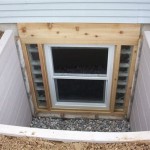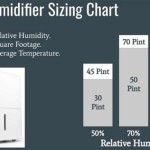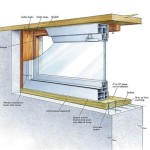How to Get the Damp Smell Out of a Basement
A damp, musty smell in a basement is a common problem for homeowners. This odor is not merely unpleasant; it signifies underlying moisture issues that can lead to mold growth, structural damage, and health concerns. Effectively eliminating the smell requires identifying the source of the moisture and implementing appropriate remediation strategies. This article outlines the key steps involved in eradicating damp smells from basements, ensuring a healthier and more comfortable living environment.
Identifying the Source of the Damp Smell
The first step in addressing a damp basement smell is pinpointing the source of the excess moisture. Without identifying the cause, any attempts at masking the odor will be temporary and ultimately ineffective. Thoroughly inspecting the basement is crucial, paying close attention to areas known to be susceptible to water intrusion.
Begin by examining the foundation walls, both inside and outside. Look for cracks, especially near ground level, which can allow water to seep through. Check for efflorescence, a white, powdery deposit on the walls, which is a telltale sign of water penetrating the concrete or brick. Pay attention to areas around windows and door frames, as these are common entry points for water. Inspect the caulking and weather stripping for any signs of damage or deterioration.
The basement floor should also be carefully examined. Look for cracks, damp spots, or signs of water pooling. A non-invasive moisture meter can be used to check the moisture content of the concrete slab. Pay close attention to areas where the floor meets the walls, as these are common points of water entry. If your basement has a drain, ensure it is clear of debris and functioning properly.
Assess the plumbing system, including pipes and fixtures, for leaks. Check under sinks, around toilets, and near washing machines. Look for signs of water damage, such as discoloration or staining. If you have a sump pump, ensure it is working correctly and that the discharge line is properly routed away from the foundation. Examine the surrounding ground to ensure it slopes away from the house, preventing water from pooling near the foundation.
Evaluate the ventilation in the basement. Poor ventilation can trap moisture, creating a humid environment conducive to mold growth and damp smells. Ensure that windows and vents are not obstructed. Consider installing a dehumidifier to reduce the humidity level in the basement.
Consider environmental factors. Recent heavy rain, snowmelt, or flooding can saturate the ground around the foundation, increasing the risk of water intrusion. A high water table can also contribute to basement dampness. Monitor the basement after periods of heavy precipitation to identify potential problem areas.
Once potential sources of moisture are identified, prioritize addressing the most significant issues first. This may involve repairing cracks in the foundation, improving drainage, or fixing plumbing leaks. By systematically eliminating sources of moisture, the likelihood of persistent damp smells will be significantly reduced.
Remediation and Cleaning Procedures
After identifying and addressing the source of the moisture, the next step involves cleaning and remediating the affected areas. Mold and mildew, which thrive in damp environments, are often the primary culprits behind the unpleasant odors. Thorough cleaning and disinfection are essential to eliminate these organisms and prevent their recurrence.
Begin by removing any items from the basement that may be contributing to the smell, such as cardboard boxes, old newspapers, or damp fabrics. These materials can absorb moisture and harbor mold. Dispose of any items that are heavily soiled or damaged by mold. For items that can be salvaged, clean them thoroughly with a mold-killing cleaner or a diluted bleach solution (1 part bleach to 10 parts water).
Clean all surfaces in the basement, including walls, floors, and ceilings, with a mold-killing cleaner. Follow the manufacturer's instructions carefully, paying attention to safety precautions. Wear gloves, eye protection, and a respirator to protect yourself from mold spores and cleaning chemicals. Scrub the affected areas thoroughly to remove any visible mold or mildew. For porous surfaces, such as drywall, consider using a mold-killing primer after cleaning to prevent regrowth.
Ensure proper ventilation during and after cleaning. Open windows and doors, if possible, to allow fresh air to circulate. Use fans to dry the cleaned surfaces quickly. This will help prevent mold from returning. If the basement has a musty smell after cleaning, consider using an air purifier with a HEPA filter to remove airborne mold spores and other allergens.
Address any lingering moisture issues. If the basement floor is damp, consider using a dehumidifier to remove excess moisture from the air. A dehumidifier can help maintain a humidity level below 50%, which is ideal for preventing mold growth. Empty the dehumidifier regularly and clean it according to the manufacturer's instructions.
For more significant mold infestations, professional mold remediation services may be necessary. These services have the expertise and equipment to safely and effectively remove mold from large areas. They can also identify and address the underlying moisture issues that are contributing to the problem.
After cleaning and remediating the basement, consider applying a mold-resistant paint or sealant to the walls and floors. This can help prevent future mold growth. Choose products that are specifically designed for use in damp environments. Regularly inspect the basement for signs of moisture or mold, and take prompt action to address any issues that arise.
Preventive Measures for Maintaining a Dry Basement
Once the damp smell has been eliminated from the basement, implementing preventive measures is crucial to maintaining a dry and odor-free environment. Preventing water intrusion and controlling humidity levels are key to long-term success. A multi-faceted approach that addresses both indoor and outdoor factors is the most effective strategy.
Improve exterior drainage. Ensure that the ground around the foundation slopes away from the house, directing water away from the walls. Clean gutters and downspouts regularly to prevent clogs and ensure that rainwater is properly diverted. Consider extending downspouts further away from the foundation to prevent water from pooling near the walls.
Seal cracks and openings in the foundation. Use a waterproof sealant to fill any cracks in the foundation walls or floor. Seal around pipes, wires, and other penetrations that may allow water to enter. Repair any damaged caulking or weather stripping around windows and doors.
Install a vapor barrier. A vapor barrier can help prevent moisture from entering the basement through the walls and floor. This is particularly important if the basement is unfinished or if the walls are made of concrete or cinder block. A vapor barrier is a plastic sheet that is installed over the walls and floor before insulation or finishing materials are added.
Use a dehumidifier. A dehumidifier can help control the humidity level in the basement, preventing mold growth and damp smells. Choose a dehumidifier that is appropriately sized for the size of the basement. Empty the dehumidifier regularly and clean it according to the manufacturer's instructions.
Improve ventilation. Ensure that the basement is properly ventilated to allow moisture to escape. Open windows and doors, if possible, to allow fresh air to circulate. Install exhaust fans in areas where moisture is likely to accumulate, such as near washing machines and dryers.
Regularly inspect the basement. Check for signs of moisture, mold, or leaks on a regular basis. Address any issues promptly to prevent them from escalating. Pay particular attention to areas that have been prone to problems in the past.
Store items properly. Avoid storing items directly on the basement floor, as this can trap moisture and create a breeding ground for mold. Use shelves or pallets to elevate items off the floor. Store items in waterproof containers to protect them from moisture.
Maintain your sump pump. If you have a sump pump, ensure that it is working correctly and that the discharge line is properly routed away from the foundation. Test the sump pump regularly to ensure that it is functioning properly. Consider installing a backup sump pump in case the primary pump fails.
By implementing these preventive measures, homeowners can significantly reduce the risk of damp smells and mold growth in their basements. Maintaining a dry basement is crucial for protecting the structural integrity of the home and ensuring a healthy living environment.

How To Get Rid Of Mold And Mildew Smell In Your Basement Aircare

Basement Waterproofing And The Smells In Your Home Atlanta Cgs

Get Rid Of Musty Odor In Basement Servicemaster Restore

Eliminate Musty Smell In Basement Homesteading Simple Self Sufficient Off The Grid Com

How To Get That Musty Smell Out Of Your Basement

How To Get Rid Of Basement Odor And Why It Smells In The First Place

How To Get Rid Of Musty Smell In Basement Wet Basements

How To Get Rid Of Basement Odor 10 Easy Methods

Musty Smell In The Basement 4 Steps To Freshness Bob Vila

How To Get Rid Of Basement Odor And Why It Smells In The First Place
Related Posts







